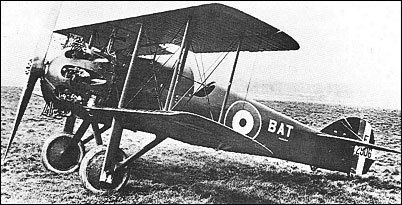Top speed 229 km/h Length 6.22 m | Wingspan 8.21 m | |
 | ||
The BAT F.K.25 Basilisk was a prototype British Fighter aircraft of the First World War. A single engined biplane intended to meet a requirement to replace the Sopwith Snipe, the Basilisk was unsuccessful, only three being built.
Contents
Development and design
In 1918, the British Air Ministry issued the RAF Type 1 specification for a single-seat fighter, powered by the new (and untried) ABC Dragonfly air cooled radial engine to replace the Sopwith Snipe. To meet this requirement, Frederick Koolhoven, (formerly of Armstrong Whitworth Aircraft and before that Deperdussin) chief designer of the British Aerial Transport Company of London, designed the F.K. 25 Basilisk.
Like Koolhovens earlier F.K.23 Bantam, the Basilisk was a two-bay biplane with a wooden monocoque fuselage, but was larger and heavier to accommodate the larger engine and the equipment required by the Specification. Armament was two Vickers machine guns mounted ahead of the pilot, and enclosed in a large fairing that formed the upper coaming of the pilot's cockpit.
Three prototypes were ordered in early 1918, and the first one flew in September 1918. It was destroyed on 3 May 1919 when attempting to break the World altitude record, its engine catching fire and BAT's test pilot, Peter Legh, being killed after he jumped clear. The second and third prototype were fitted with modified, horn balanced ailerons, with the second prototype tested at Martlesham Heath in October 1919. While its performance was good (although not as good as claimed by BAT), the Dragonfly engine was hopelessly unreliable, with further development or production abandoned earlier in the year, and the Basilisk was abandoned when Koolhoven left BAT at the end of 1919.
Specifications (Second prototype)
Data from Jane's All the World's Aircraft 1919 War Planes of the First World War: Fighters Volume One
General characteristics
Performance
Armament
